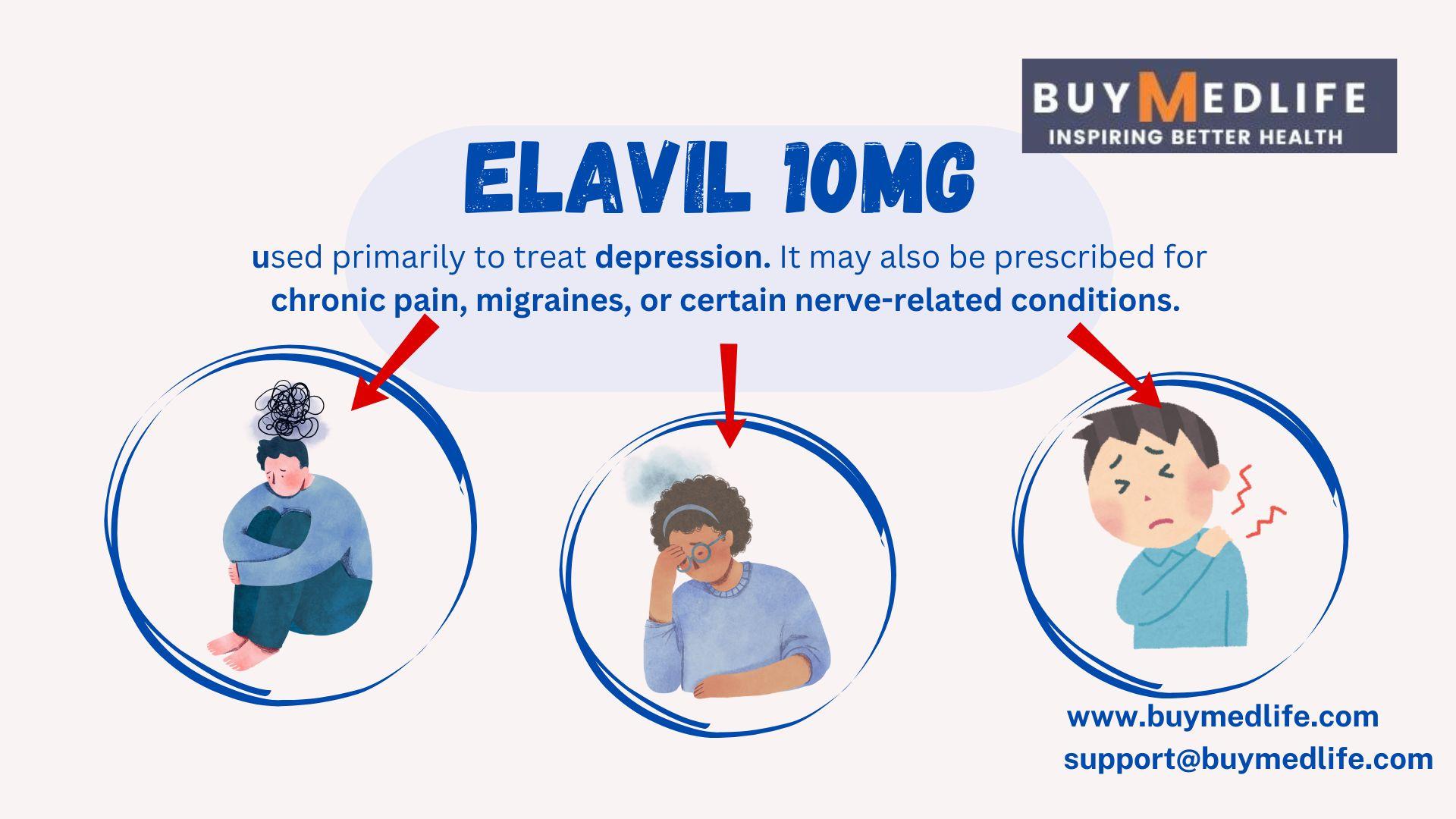Elavil, the brand name for amitriptyline, is a tricyclic antidepressant (TCA) commonly prescribed for various mental health conditions. Available in multiple dosages, the 10mg formulation is often utilized for low-dose therapy, either as an introductory dose or as a treatment for conditions requiring less intensive medication. This article explores the uses, benefits, and considerations of Elavil 10mg in mental health treatment.
Understanding Elavil and Its Mechanism of Action
Elavil belongs to the class of TCAs, a group of medications developed in the 1950s. These drugs primarily affect neurotransmitter levels in the brain, including serotonin and norepinephrine, which play crucial roles in regulating mood and emotional responses. By preventing the reuptake of these neurotransmitters, Elavil enhances their availability in the synaptic cleft, promoting mood stabilization and alleviation of depressive symptoms.
The 10mg dose is considered low and is typically employed to minimize side effects while still offering therapeutic benefits. This dose is particularly useful in individuals with heightened sensitivity to medication or those requiring gradual titration.
Primary Uses of Elavil 10mg
-
Depression
While Elavil is often prescribed in higher doses (25-150mg) for major depressive disorder, the 10mg formulation can be effective for mild cases or as a starting dose for individuals new to TCAs. It helps alleviate symptoms such as low mood, fatigue, and loss of interest in activities. -
Chronic Pain Management
Elavil 10mg is frequently used in the treatment of chronic pain syndromes, including neuropathic pain, fibromyalgia, and migraines. The low-dose regimen is sufficient to modulate pain perception by acting on pain pathways in the nervous system, without the need for higher antidepressant effects. -
Anxiety Disorders
Anxiety and depression often coexist, and Elavil can address both conditions simultaneously. The 10mg dose is particularly beneficial for patients who are overly sensitive to conventional anxiety medications, offering a gentle yet effective alternative. -
Sleep Disorders
Elavil’s sedative properties make it an effective off-label treatment for insomnia. A low dose, such as 10mg, is typically taken at bedtime to promote restful sleep without causing significant next-day grogginess. -
Irritable Bowel Syndrome (IBS)
Studies have shown that low-dose amitriptyline can help manage symptoms of IBS, such as abdominal pain and diarrhea, by modulating gut-brain interaction and reducing visceral hypersensitivity.
Benefits of Elavil 10mg
-
Low Side Effect Profile
The 10mg dosage minimizes the risk of adverse effects commonly associated with TCAs, such as dry mouth, dizziness, or weight gain. This makes it suitable for individuals who cannot tolerate higher doses. -
Versatility
Elavil 10mg addresses multiple conditions, from mood disorders to pain syndromes, making it a multipurpose medication in mental health and general medicine. -
Cost-Effectiveness
As a generic drug, amitriptyline is affordable compared to newer antidepressants or specialized pain medications, ensuring accessibility for a broad patient base. -
Adjunctive Therapy
Elavil 10mg can complement other medications or therapies. For instance, it may enhance the effects of selective serotonin reuptake inhibitors (SSRIs) or be used alongside cognitive-behavioral therapy (CBT). -
Ease of Titration
The 10mg dose serves as a starting point for patients who may require higher doses later, allowing gradual titration while monitoring for efficacy and tolerability.
Considerations and Potential Risks
Despite its benefits, Elavil 10mg is not without risks. Patients and healthcare providers should consider the following:
-
Side Effects
Common side effects, even at low doses, include drowsiness, dry mouth, and mild gastrointestinal discomfort. Less commonly, it may cause blurred vision or urinary retention. -
Drug Interactions
Elavil interacts with various medications, including monoamine oxidase inhibitors (MAOIs), SSRIs, and certain pain relievers. Such interactions can lead to serious conditions like serotonin syndrome or increased sedation. -
Overdose Risk
TCAs, including Elavil, have a narrow therapeutic index, meaning the difference between an effective dose and a toxic dose is small. Patients should adhere strictly to prescribed dosages to avoid overdose. -
Not Ideal for Everyone
Individuals with certain conditions, such as a history of heart disease, glaucoma, or seizures, should exercise caution when using Elavil. Pregnant or breastfeeding women should also consult their healthcare provider before initiating therapy. -
Gradual Discontinuation Required
Abrupt cessation of Elavil can result in withdrawal symptoms, such as nausea, headache, and irritability. It is important to taper off the medication under medical supervision.
Key Considerations for Patients and Providers
When prescribing Elavil 10mg, healthcare providers typically evaluate the patient's medical history, current medications, and specific symptoms. Routine follow-up appointments help assess the drug’s effectiveness and monitor for side effects. Patients are encouraged to report any concerns promptly and adhere to the prescribed regimen.
Conclusion
Elavil 10mg remains a valuable tool in mental health treatment, offering a low-dose option for managing depression, anxiety, pain, and other conditions. Its versatility and affordability make it a popular choice for patients and providers. However, as with any medication, careful monitoring and adherence to medical advice are essential to maximize benefits and minimize risks. By working collaboratively, patients and healthcare providers can harness the full potential of Elavil 10mg to improve mental and physical well-being.



